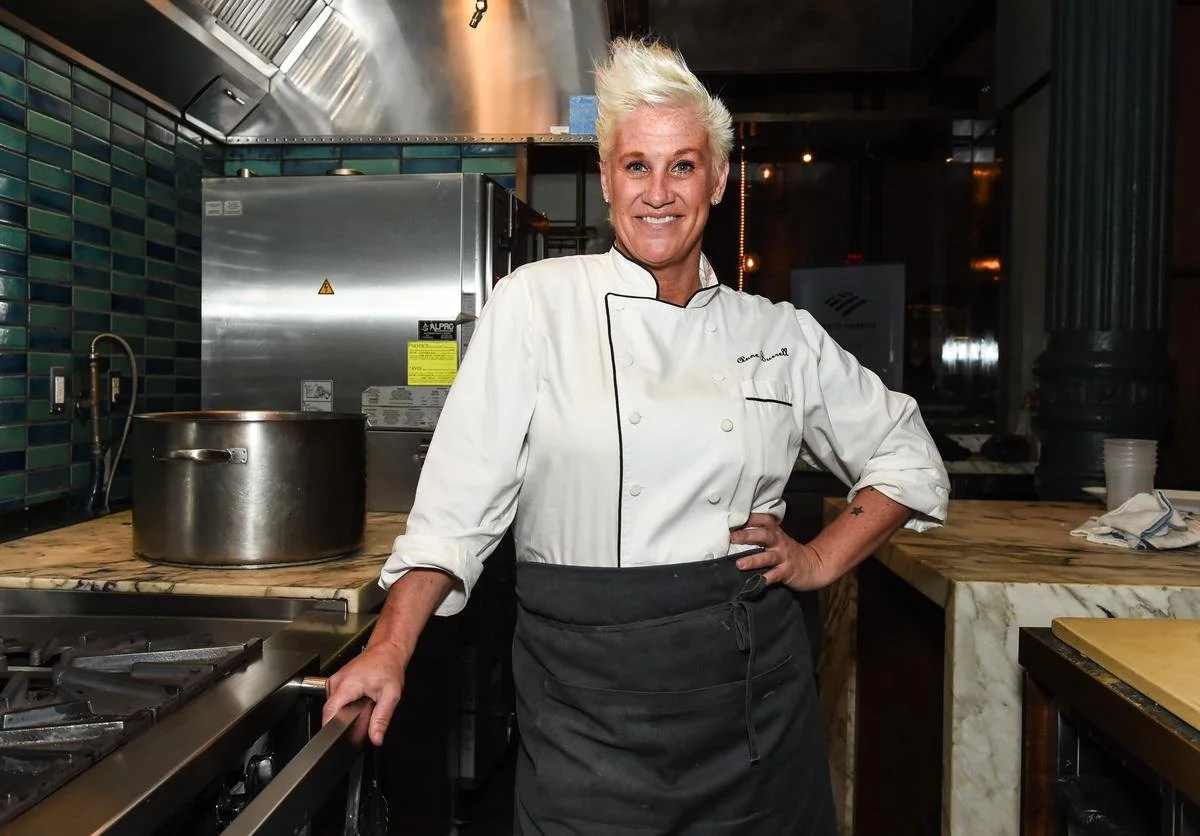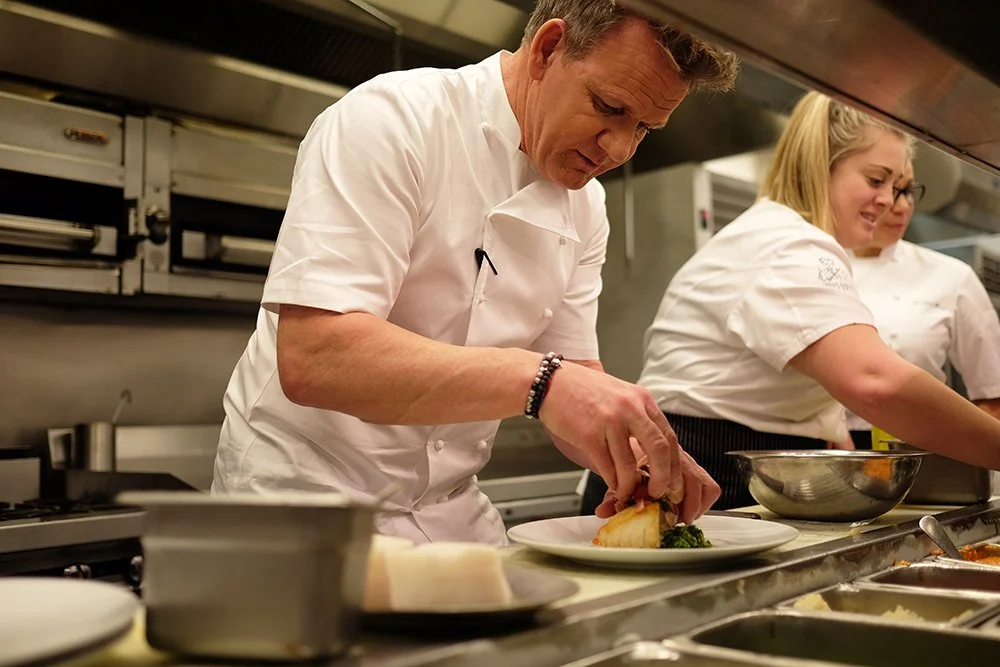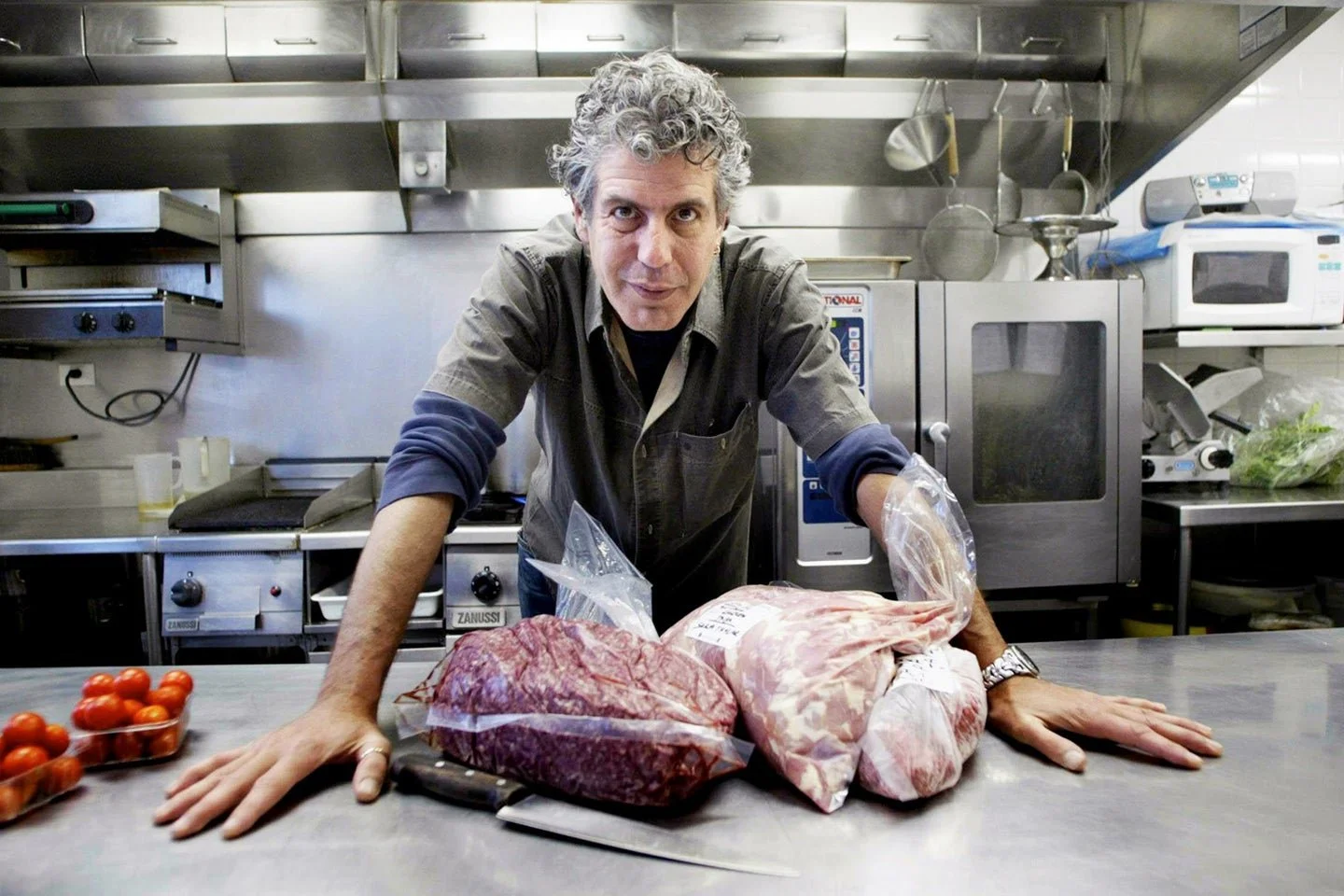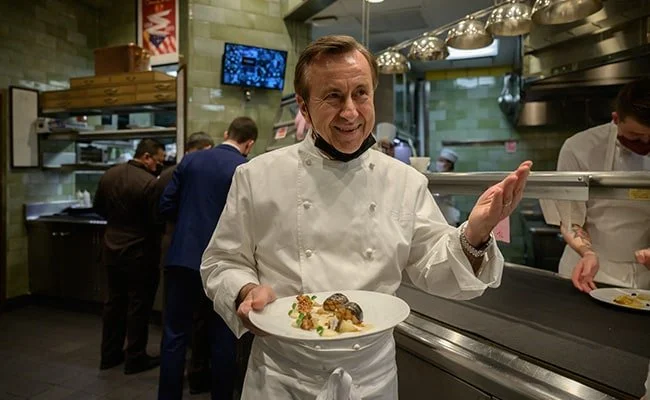Code Kitchen - The dance of profession and passion
Growing up, food was always a big deal in my family. Sundays meant the aroma of roast chicken drifting through the house, while Saturdays were reserved for my grandmother's legendary strudel. These culinary experiences weren't just meals; they were events, rich with stories and laughter. This early immersion in the world of flavors instilled in me a deep appreciation for the art of cooking. After primary school, when the time came to choose my further career path, I found myself at a crossroads, torn between two seemingly disparate worlds: the analytical precision of information technology and the creative, hands-on artistry of becoming a chef. Ultimately, I chose the IT route, drawn by the allure of innovation and problem-solving. However, the kitchen, with its vibrant energy and endless possibilities, never truly left my sight.
It's ironic, then, that my first days in the world of algorithms was met with the failure to understand what an algorithm was, until my teacher offered a simple yet profound analogy: "Think of an algorithm," she explained, "as a cake recipe." Suddenly, a lightbulb went off. The steps, the ingredients, the precise order, it all clicked. A recipe, in its essence, is an algorithm for creating something delicious, a clear set of instructions to achieve a desired outcome.
From that moment on, the parallel between the culinary and computational worlds became a constant source of fascination and insight. Throughout the years, I found countless other analogies, each one deepening my understanding of complex technical concepts by grounding them in the familiar, tangible world of food. Even more important, throughout the years, I dedicated myself to learning. I read countless books by renowned chefs. I even spent a few summers working in the kitchen. I listened to numerous interviews, hanging on every word, searching for that one small, profound bit of wisdom that would stick with me, a nugget of culinary insight that could be applied not just to cooking, but to life, and even to coding. Lucky for me, through this relentless pursuit of knowledge, I was indeed able to find more than a few such gems.
“I believe that there is always something new to learn, in fact, that is one of the three reasons that I chose to become a chef, that my education is never over.”
Anne Burrell
"Non progredi est regredi" – "To not go forward is to go backward." This Latin phrase, prominently displayed at my high school entrance, was initially enigmatic. Little did I realize how profoundly it would resonate throughout my professional life.
Early in one's career, it becomes clear that true mastery is an elusive goal; there's an endless frontier of knowledge to explore. Be it a new library, a novel paradigm, a fresh concept, or an innovative architecture, the learning journey never ceases. Even if you've mastered the five mother sauces, countless other culinary variations await discovery, all stemming from those core principles.From the start of our careers, we often realize that true mastery isn't a final destination, but a constantly moving goal. Knowledge is vast and endless, inviting us to explore forever. Every new tool we learn, every new idea that changes our understanding, every fresh concept that challenges old ways, and every new design that redefines what's possible, shows us that learning never stops. It's a continuous process, proving how dynamic and always changing any field can be.
Think about cooking, for example. Every chef learns the five mother sauces (Béchamel, Velouté, Espagnole, Hollandaise, and Tomato). But this mastery (of not splitting the sauce), while impressive, is just the beginning. Beyond those fundamentals, there's an almost endless variety of dishes, each showing how flexible those first basics are. Imagine the countless variations: Mornay from Béchamel, Allemande from Velouté, Bordelaise from Espagnole, Béarnaise from Hollandaise, and Marinara from Tomato. There are so many techniques to learn. From Espouma to Sous Vide and purees
This idea goes far beyond the kitchen. In software development, mastering a programming language like Python is a great achievement. However, true mastery isn't just about knowing the rules; it's about understanding the core ideas of how computers think, how data is organized, and how algorithms work. From this base, you can then explore many specialized tools like NumPy for science, Django for websites, or TensorFlow for machine learning. But there is always more to learn. Another framework, another technique, another language, another technology, another profession.
The message is clear: pursuing mastery isn't about reaching an end, but about developing a mindset of constant curiosity, adaptability, and growth. The exploration of taste did not end with Escoffier, but just began to formalize. It's about realizing that every new piece of knowledge, every new skill gained, and every new challenge overcome, simply opens up another view in the vast, unexplored territory of human understanding. This ongoing process of learning, forgetting, and relearning isn't a burden, but a privilege.
“If you want to become a great chef, you have to work with great chefs. And that’s exactly what I did.”
Gordon Ramsay
My first job was a crash course in learning on my own. I picked up a ton of stuff, but without anyone to guide me, every lesson was a tough one learned through my own mistakes. After two years, I realized I needed a change. So, I moved to a new role, joining a team that was all senior pros. It was a game-changer. In just three months, I learned more than I had in the entire two years before. That really showed me how much good mentorship matters.
Also, if you're always the smartest person in the room, you are in the wrong room. Don't fall into the trap of only learning from your own screw-ups or constantly "reinventing the wheel." Instead, make it a habit to learn from those who've already been there and mastered it. Their wisdom and experience are huge shortcuts to success and faster growth.
To truly learn from great chefs, immerse yourself in their kitchens. Observe meticulously: how they manage their mise en place, their flow, and their problem-solving under pressure. Learning a chef's style comes from understanding their philosophy and adapting it to your own. You'll grasp when to make a dish more complex by adding layers of flavor and technique, or when to simplify it to highlight a star ingredient. Functioning under pressure becomes second nature as you witness their calm precision amidst the chaos, absorbing their focus and efficiency. Changing environments will also show you different sides of the job. You will see passion, knowledge, but unfortunately you will also see those who have given up and stopped caring.
“Perfection is a lot of small things done the right way”
Marco Pierre White
This philosophy is profoundly applicable in the realm of IT. In software development, just as in cooking, perfection isn't achieved through one grand gesture, but through the meticulous execution of countless smaller tasks. Consider the architecture of a complex system: each function, module, and integration point must be designed and implemented correctly. A bug in a minor component can cascade, compromising the entire system's integrity. Similarly, in cybersecurity, neglecting small vulnerabilities can open doors for significant breaches. The proper indentation of code, the clear naming of variables, thorough unit testing, effective error handling, and consistent documentation are all "small things." When each of these is done "the right way," they collectively contribute to robust, maintainable, and high-performing software. It's the cumulative effect of these precise, often invisible, details that separates good software from great software, much like the difference between a passable meal and a truly exquisite dish.
In cooking, "perfection is a lot of small things done the right way" translates to meticulous attention to detail at every stage. It begins with the mise en place: precisely measured ingredients, perfectly diced vegetables, and prepped herbs. The right way means understanding the nuances of each ingredient—the perfect ripeness of a tomato, the specific cut of meat, or the ideal grind of spice.
Execution is key. This involves mastering fundamental techniques: the correct temperature for searing, the gentle folding of a delicate batter, or the precise timing for blanching vegetables to retain their color and crispness. It's about tasting and adjusting seasonings throughout the cooking process, rather than waiting until the very end.
Even seemingly minor details contribute significantly: the consistency of a sauce, the even browning of roasted vegetables, or the perfectly al dente pasta. Plating also matters; it's the final presentation of these small, well-executed steps. Each element, from the proper seasoning to the thoughtful garnish, contributes to the overall exquisite experience, transforming a simple meal into a memorable culinary creation.
There's one huge difference between these two jobs. In software, you can build something, nail the presentation, ship it, even keep rolling out updates and fixes. But in the kitchen? Once that plate's out, it's done. No do-overs, no quick fixes – just a refire.
“Without experimentation, a willingness to ask questions and try new things, we shall surely become static, repetitive and moribund.”
Anthony Bourdain
Going after a goal is usually a long haul, full of tries, misses, and tweaks, until you finally hit it. The path itself is tough but full of great lessons. Once you get where you want to be, it's natural to really want to hold onto what you've got, which can easily lead to getting stuck in your ways. Allow yourself to be surprised, allow yourself to think out of the box.
In software, developers often notice that the same problems keep popping up, and so do similar solutions. The next logical step is to build reusable libraries or tools, but if you get too wrapped up in these libraries, you might start focusing more on fitting those into the client’s problem, and not actually solving the client’s problems. This can lead to a huge, inflexible system. Just because a solution works doesn't mean there isn't a better way.
Think about all the ways to cook a steak—most involve heating it up. Grilling, baking, or pan-frying (on cast iron, Teflon, or carbon iron) usually means cooking for just a few minutes per side, leaving a tiny window for perfection before it's overcooked. Success often comes down to experience and a willingness to learn. Ironically, one of the most reliable and low-risk ways to cook steak is by slow-cooking it for hours in a water bath. This method, relatively new in cooking history, really took off as chefs played around with its uses and limits. Beyond steaks, it makes vegetables incredibly juicy or even sometimes gives them previously unknown textures. One simple chef's kitchen experiment changed forever the food world.
“When you run a kitchen, no matter how crazy and chaotic it gets, you have to be the calm one.”
Nina Compton
Being able to keep your cool is super important in high-pressure situations, whether you're leading a team or just trying to solve a tough problem. Think about it: a calm leader, whether in a busy kitchen or on a tricky IT project, can really steady the ship and guide everyone through the tough stuff.
In the tech world, things can get pretty wild with unexpected bugs, system crashes, tight deadlines, or even just confusing requests. But if an IT leader or developer stays calm, it stops panic from spreading like wildfire. Say a major system goes down – someone who keeps their head can methodically figure out what's wrong, hand out tasks efficiently, and keep everyone informed. This cool-headed approach doesn't just fix things faster; it also builds tons of trust and confidence in the team. It shows that even the scariest problems can be tackled with a clear mind.
And in the kitchen? Man, that place can be pure chaos, especially during a rush. Orders flying in, a dozen things cooking at once, and it's hotter than heck. A chef who stays chill in that madness is a total rockstar. They can instantly tell what's ready, see potential problems before they happen, and give super clear directions to their crew. That calm vibe lets them spot and fix mistakes fast, keep the food quality top-notch, and just keep everything flowing smoothly. End result? Happy customers and amazing food, every time.
“To me, there’s no great chef without a great team.”
Daniel Boulud
True success rarely comes from one person's isolated genius; instead, it largely depends on the synchronized efforts of a dedicated team. An individual might spark an idea, but transforming it into reality, whether a revolution or a product, is almost exclusively a collective endeavor, amplifying strengths and mitigating weaknesses through shared commitment.
In IT, a groundbreaking software release isn't solely a lead architect's vision. It's the intricate result of numerous developers coding, QA testing, meticulous debugging, and seamless collaboration across diverse teams like front-end, back-end, database, cybersecurity, and operations. This collective intelligence ensures the software is functional, secure, efficient, and user-friendly.
Similarly, a Michelin-star dining experience isn't just the head chef's creation. It's a precise ballet of specialized individuals—prep cooks, line cooks, pastry chefs, even dishwashers—each performing tasks with unparalleled precision and commitment. This intricate choreography transforms ingredients into a symphony of flavors and presentation, reflecting harmonious kitchen team collaboration.
The realms of software development and culinary arts, though seemingly distinct, share profound universal principles for success. Both demand relentless growth, continuous learning, and adaptation to evolving demands. Mentorship is vital, with experienced hands guiding newcomers to absorb deeper craft understanding. Precision is non-negotiable; tiny errors can ruin code or cuisine. Yet, precision must be paired with innovation, the courage to experiment and push boundaries. In crises, calmness is key, allowing clear thinking and systematic troubleshooting. Finally, collaboration is paramount; true achievement in complex projects or kitchens is a shared victory. These principles—growth, mentorship, precision, innovation, calmness, and collaboration—are not abstract but living guides for mastery in any field, transforming tasks into an endless, evolving, and deeply satisfying adventure.






